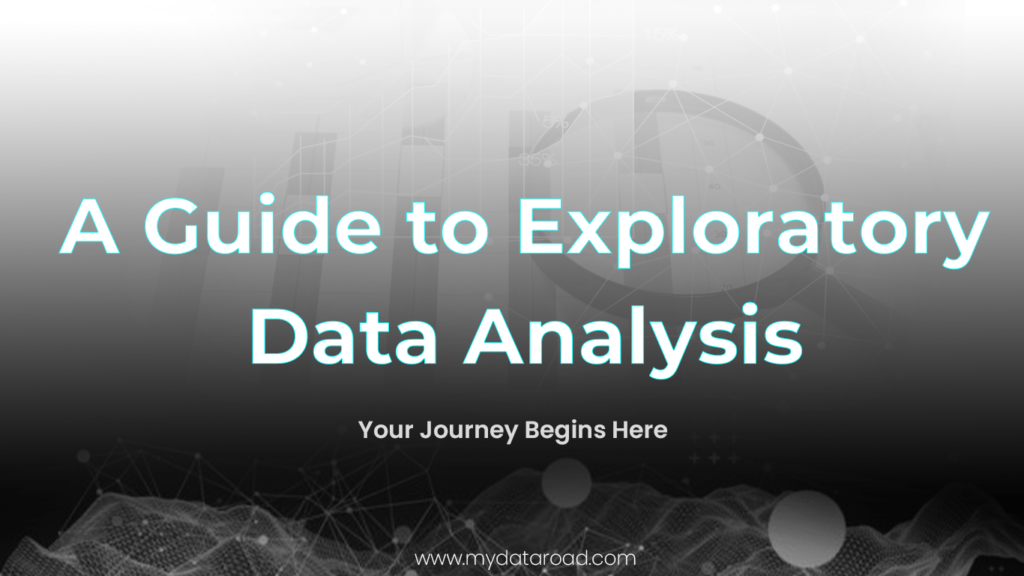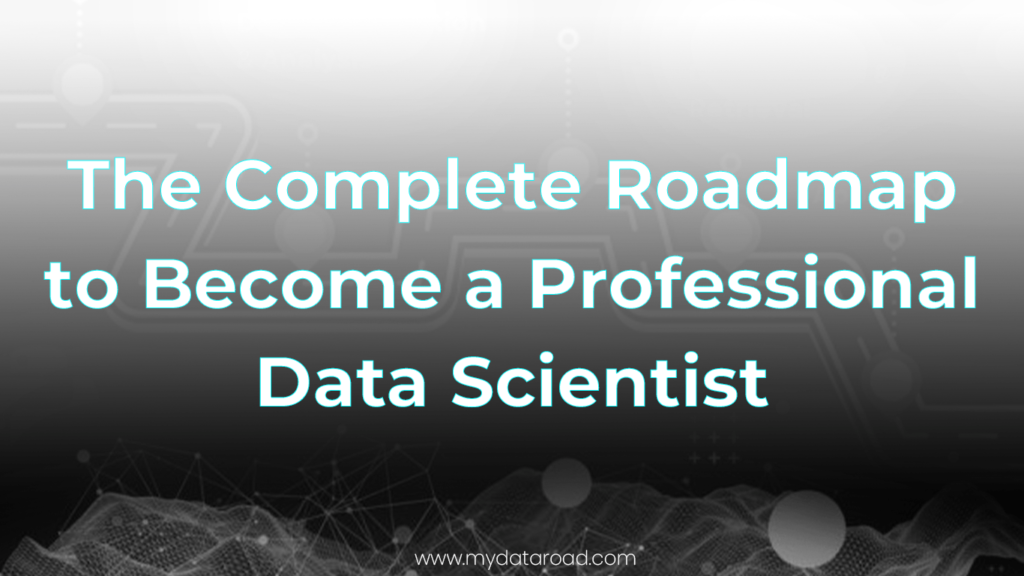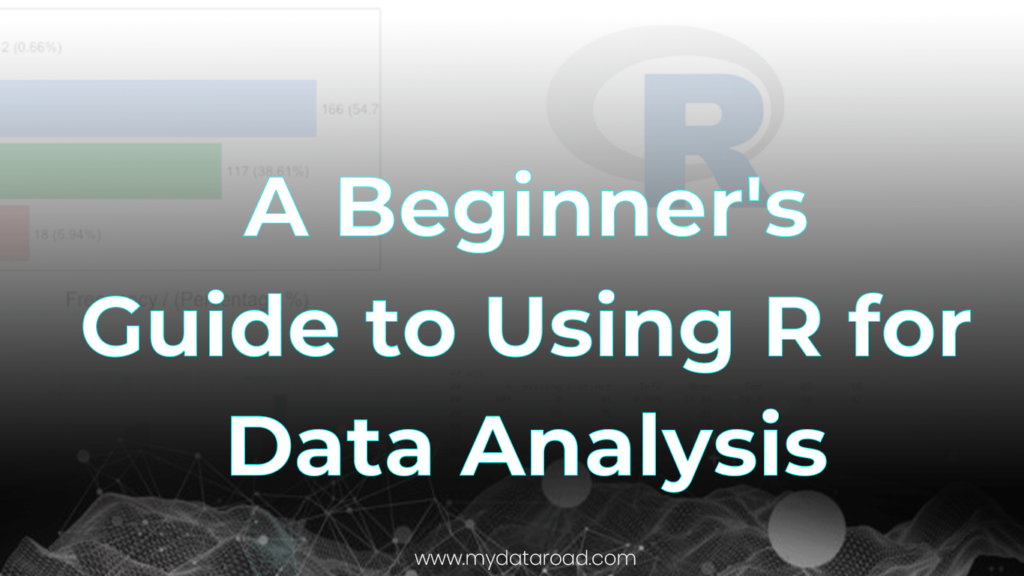A Guide to Exploratory Data Analysis (EDA): Your Journey Begins Here
Data analysis is an ever-expanding universe, with new concepts and techniques constantly unveiling themselves to the adventurous explorer. One such pivotal technique, both foundational and exceptionally powerful, is Exploratory Data Analysis (EDA). At MyDataRoad, we believe in educating and guiding aspiring data scientists, and that’s exactly what this guide aims to do.
What is EDA: Unveiling the Mask
Exploratory Data Analysis, or EDA, is an approach to data analysis that allows you to make sense of the intricate patterns, relationships, and outliers in your data, before resorting to more sophisticated techniques. EDA doesn’t just help you understand your data; it narrates a tale, and like any good narrator, it knows when to pause, when to stress, and where to induce suspense.
As a data analyst, embracing EDA is equivalent to a detective assembling a case—sifting through the evidence, recognizing patterns, formulating hypotheses, and finally laying out a narrative that connects the dots. This is the beauty and utility of EDA—it enables you to weave a narrative out of raw numbers and unprocessed data.
The Stages of EDA: Assembling the Puzzle
The process of EDA is not a single, definitive procedure but rather a collection of techniques and processes. Here is a simplified roadmap for a better understanding:
- Data Collection: This is your first step into the world of EDA. Your journey starts at MyDataRoad, where we constantly discuss and delve into various aspects of data analysis.
- Data Cleaning: Once the data is collected, the next step is data cleaning. It involves handling missing values, outliers, and incorrect data. It is often said that “garbage in, garbage out”, implying that the quality of your output is as good as the quality of your input.
- Data Profiling: At this stage, you’ll summarize your dataset through descriptive statistics to understand the data better. You will become familiar with concepts like mean, median, mode, variance, etc.
- Data Visualization: This step involves visualizing the data to understand any underlying patterns, trends, or outliers. Tools such as Python’s Matplotlib, Seaborn, and R’s ggplot2 are often used for creating histograms, bar charts, scatter plots, etc.
- Data Interpretation: The final stage is interpreting the data visualizations and statistical summaries to make data-driven decisions.
The Significance of EDA: Why Should You Care?
EDA isn’t just another step in the data analysis workflow—it’s a philosophy, a mindset, and a fundamental approach toward how we perceive data. It enables us to understand our data better, prepare it more effectively, and therefore, increase the accuracy of our future predictions and analysis.
Imagine being tasked to perform a Regression Analysis. Without proper EDA, you might end up missing out on certain aspects of your data—like underlying relationships or unnoticed outliers—that could significantly impact the accuracy of your results. But armed with EDA, you would have already unveiled these hidden aspects, enabling you to make more informed and effective decisions.
From beginners starting with R for Data Analysis to more advanced techniques like Time Series Analysis and Cluster Analysis, EDA is your trusted ally at every step.
While there’s more to unfold in the realm of EDA, the journey of exploration must proceed in steps. The next part of this article will take you further into the world of EDA and the various techniques used to accomplish it. Stay tuned to continue your expedition into the exciting realm of Exploratory Data Analysis!
EDA Techniques: Your Tools for Exploration
As you embark further into your journey, it’s essential to equip yourself with the right tools. EDA provides a plethora of techniques that allow you to uncover the hidden secrets in your data.
Univariate Analysis
The simplest form of EDA is univariate analysis. It’s all about analyzing one variable at a time. This technique can help you understand the distribution, central tendency, and spread of your data. Here, simple tools like histograms and box plots come in handy.
For instance, suppose you are working on a project involving Numpy for Data Analysis. The univariate analysis will help you understand each attribute you’re dealing with—like how varied the data is, whether it has any outliers, and so forth.
Bivariate Analysis
Next up is bivariate analysis. As the name suggests, this technique involves analyzing two variables together. This helps you to understand the relationship between these variables. Scatter plots, stacked bar plots, and heatmaps are typically used for this type of analysis.
Let’s consider an example. Suppose you are performing Regression Analysis. Using bivariate analysis, you can identify the relationship between your independent and dependent variables.
Multivariate Analysis
Finally, we have multivariate analysis, which involves analyzing more than two variables simultaneously. This technique helps you to understand the complex relationships between multiple variables in your dataset. It also enables you to observe the effect of multiple variables on your responses.
Let’s say you are using Cluster Analysis. With multivariate analysis, you can segregate your data into specific groups based on several variables.
“Data is a precious thing and will last longer than the systems themselves.” – Tim Berners-Lee
Practical EDA: Sailing the Ship
EDA is like a compass—it guides you, but you still have to sail the ship. It’s essential to get hands-on and learn how to apply these techniques in real-world scenarios. That’s where MyDataRoad steps in to help you Solve Data Analysis Problems in the Real World.
The key is to start small, gain confidence, and gradually take on more significant challenges. Remember, the path to becoming a proficient data analyst or data scientist is not a sprint, but a marathon. It’s about continuous learning and improvement.
In the concluding part of this article, we will share some best practices for performing EDA and how you can continue your learning journey in data analysis. Stay tuned to keep exploring the fascinating world of EDA!
EDA Best Practices: Navigating the Journey Skillfully
Like any scientific process, performing effective EDA requires following certain best practices. Here are a few essential ones to keep in mind.
- Always Start with EDA: Before diving into sophisticated modeling techniques, make sure to perform EDA. This will help you understand your data and potentially save you time and effort later on.
- Visualize Your Data: Visualization is key in EDA. Charts, plots, and graphs allow you to see patterns, trends, and outliers that you may not spot in raw data.
- Look for Missing Data: Data cleaning is an essential part of EDA. Ensure to look for and handle missing or incorrect data to prevent biased analysis.
- Iterative Process: Remember, EDA is an iterative process. As you explore, new questions may arise, requiring you to go back and explore some more.
Continuing Your Learning Journey
At MyDataRoad, our mission is to educate and guide you on your path to becoming a professional data analyst or data scientist. With a wealth of blog posts on various data analysis topics, we’re here to support you at every step of your journey.
Whether you’re a novice starting with A Beginner’s Guide to Using R for Data Analysis or an experienced analyst exploring advanced topics like Time Series Analysis, we have resources that cater to every learning level.
“Learning never exhausts the mind.” – Leonardo da Vinci
Wrapping It Up
EDA is a critical aspect of data analysis and data science. It gives you a deeper understanding of your data, allows you to spot trends, patterns, and outliers, and helps you make informed decisions.
In this guide, we’ve introduced you to the essence of EDA, explored its key techniques, and shared best practices for effective data exploration. But the journey doesn’t end here. Keep exploring, keep learning, and remember—every step you take on this data road is one step closer to mastering the fascinating field of data analysis.
The world of data is waiting for you to discover it. Happy exploring!
EDA FAQs:
1. What are some common software tools used for performing exploratory data analysis?
Some popular tools include programming languages like Python and R, which have extensive libraries and packages like Pandas, Matplotlib, Seaborn, and ggplot2 dedicated to EDA. Additionally, GUI-based tools like Tableau and Excel also offer options for basic EDA.
What are the different types of data visualizations used in EDA and their respective uses?
There are many types of visualizations for EDA. Histograms are great for understanding the distribution of data. Scatter plots can help identify correlations between variables. Box plots offer a way to detect outliers and understand the variability in your data. Heatmaps can visually represent complex correlations in large data matrices.
How to handle missing or incorrect data during the EDA process?
Missing data can be handled in various ways depending on the context. Some common strategies include: removing the rows with missing data, filling in missing values with a statistical measure (mean, median, mode), and using prediction models to estimate the missing values.
Any more resources for further deepening my understanding of EDA?
For beginners, online platforms like Coursera, Khan Academy, and Udacity have courses on statistics and data science that include EDA. Books like “Exploratory Data Analysis” by John Tukey and blogs like towardsdatascience.com also offer deeper insights.
Can EDA techniques be used for both quantitative and qualitative data, or is it limited to one type?
Yes, EDA techniques can be applied to both quantitative and qualitative data. For quantitative data, statistical summaries and visualizations are typically used. For qualitative data, techniques like content analysis, thematic analysis, or word frequency analysis can be used.
Could you provide some real-world examples of how EDA has been used to draw significant insights in data analysis?
EDA is widely used in various fields. In marketing, EDA could be used to understand customer behavior patterns. In healthcare, EDA might be used to analyze patient data and find correlations between different health indicators. In finance, EDA can help understand investment patterns and market trends.
In what ways does EDA assist in the subsequent modeling and prediction phases of data analysis?
EDA is vital in the data modeling phase as it helps identify trends, patterns, and relationships between variables that form the basis of predictive models. It also helps validate assumptions made during model development and can highlight potential issues like outliers that could adversely impact model performance.
What you should know:
- Our Mission is to Help you to Become a Professional Data Analyst.
- This Website is a Home for Data Analysts. Get our latest in-depth Data Analysis and Artificial Intelligence Lessons and Updates in your Inbox.

Tech Writer | Data Analyst | Digital Creator



